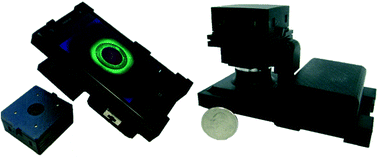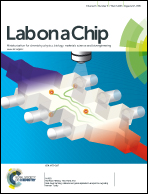Rapid imaging, detection and quantification of Giardia lamblia cysts using mobile-phone based fluorescent microscopy and machine learning
Abstract
Rapid and sensitive detection of waterborne pathogens in drinkable and recreational water sources is crucial for treating and preventing the spread of water related diseases, especially in resource-limited settings. Here we present a field-portable and cost-effective platform for detection and quantification of Giardia lamblia cysts, one of the most common waterborne parasites, which has a thick cell wall that makes it resistant to most water disinfection techniques including chlorination. The platform consists of a smartphone coupled with an opto-mechanical attachment weighing ~205 g, which utilizes a hand-held fluorescence microscope design aligned with the camera unit of the smartphone to image custom-designed disposable water sample cassettes. Each sample cassette is composed of absorbent pads and mechanical filter membranes; a membrane with 8 μm pore size is used as a porous spacing layer to prevent the backflow of particles to the upper membrane, while the top membrane with 5 μm pore size is used to capture the individual Giardia cysts that are fluorescently labeled. A fluorescence image of the filter surface (field-of-view: ~0.8 cm2) is captured and wirelessly transmitted via the mobile-phone to our servers for rapid processing using a machine learning algorithm that is trained on statistical features of Giardia cysts to automatically detect and count the cysts captured on the membrane. The results are then transmitted back to the mobile-phone in less than 2 minutes and are displayed through a smart application running on the phone. This mobile platform, along with our custom-developed sample preparation protocol, enables analysis of large volumes of water (e.g., 10–20 mL) for automated detection and enumeration of Giardia cysts in ~1 hour, including all the steps of sample preparation and analysis. We evaluated the performance of this approach using flow-cytometer-enumerated Giardia-contaminated water samples, demonstrating an average cyst capture efficiency of ~79% on our filter membrane along with a machine learning based cyst counting sensitivity of ~84%, yielding a limit-of-detection of ~12 cysts per 10 mL. Providing rapid detection and quantification of microorganisms, this field-portable imaging and sensing platform running on a mobile-phone could be useful for water quality monitoring in field and resource-limited settings.


 Please wait while we load your content...
Please wait while we load your content...